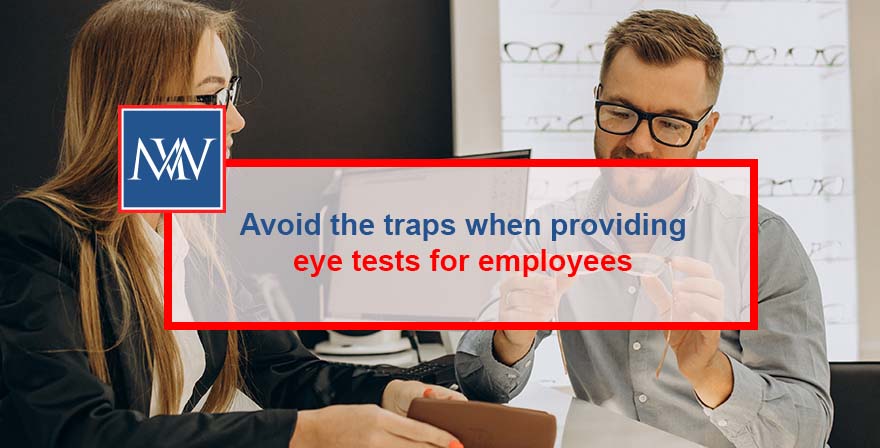
Avoid the traps when providing eye tests for employees
Although the tax system contains an exemption for employer-provided eye tests and the glasses or contact lenses for display screen use, its availability is dependent on the associated conditions being met. When seeking to take advantage of the exemption, the method of provision is key. The tax consequences of an employer providing eye tests for employees are very different to those where an employer reimburses an employee for the cost of an eye test which they initially paid for – despite the end result (in that the employer ultimately meets the cost of the test) being the same.
The exemption
The exemption prevents a tax liability arising where an employee is provided with an eye and eyesight test or special corrective appliances that an eye and eyesight test show to be necessary. The corrective appliances must be for display screen equipment use only – if the employee needs glasses for reading or everyday use, these fall outside the scope of the exemption. The availability of the exemption is contingent on two conditions – condition A and condition B – being met.
Condition A is that the provision of the test or appliances is required by regulations made under the Health and Safety at Work etc. Act 1974. The law requires employers to arrange eye tests for display equipment users and provide glasses where needed for display equipment work only.
Condition B is that the tests and corrective appliances must be made available generally to those employees for whom the regulations necessitate their provision.
To comply with the health and safety legislation, it does not matter if the employer arranges the test with the optician and pays for it, the employee arranges it and the employer pays the optician on the employee’s behalf or the employee arranges it and pays for it and the employer reimburses the employee. However, from a tax perspective, all routes are not equal.
Employer arranges and pays for the test
Assuming the conditions are met, the exemption will apply if the employer arranges the test with the optician and pays for it – here the employer is providing the employee with an eye test. If corrective appliances are provided, the exemption will similarly apply as long as the employer arranges their provision and pays for them.
Employee arranges the test and the employer pays
From a tax perspective, if the employee arranges the test and the employer pays for it on the employee’s behalf, the employer is settling an employee’s private bill rather than providing an eye test. The exemption only applies to the provision of an eye test or corrective appliances, not to the settling of a pecuniary liability. To avoid falling foul of this trap, the employer should arrange the test directly with the optician and pay the optician.
Employer reimburses the employee
In the event that the employee arranges and pays for an eye test and is reimbursed by the employer the exemption for eye tests is not in point as the employer is not providing an eye test. The exemption for paid and reimbursed expenses will only apply if the employee would be entitled to a tax deduction if they met the cost themselves. This is not the case here. Consequently, any reimbursement of the cost of an eye test or corrective appliances is taxable.
Need Accountancy Support?
For information on bespoke training, or if you have any other questions for Makesworth Accountant, please fill in your details below
















 151
151